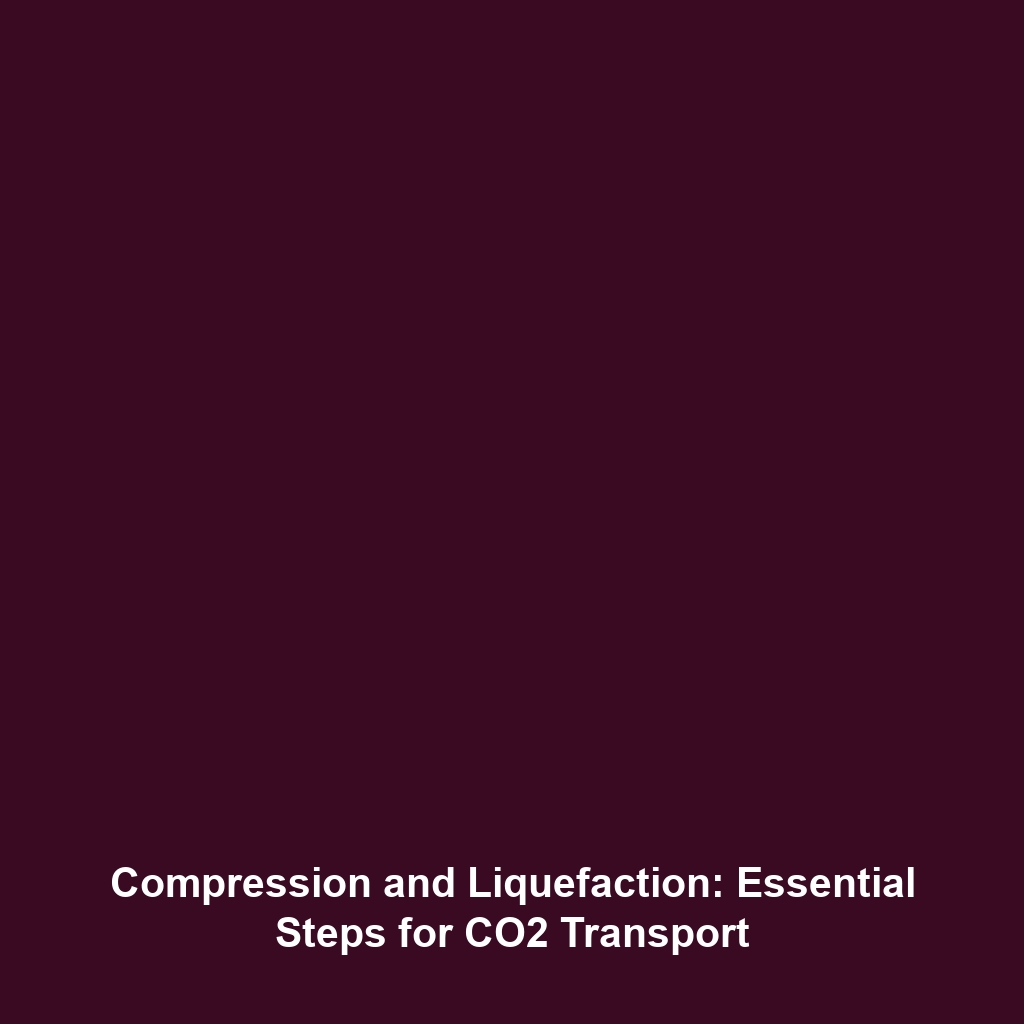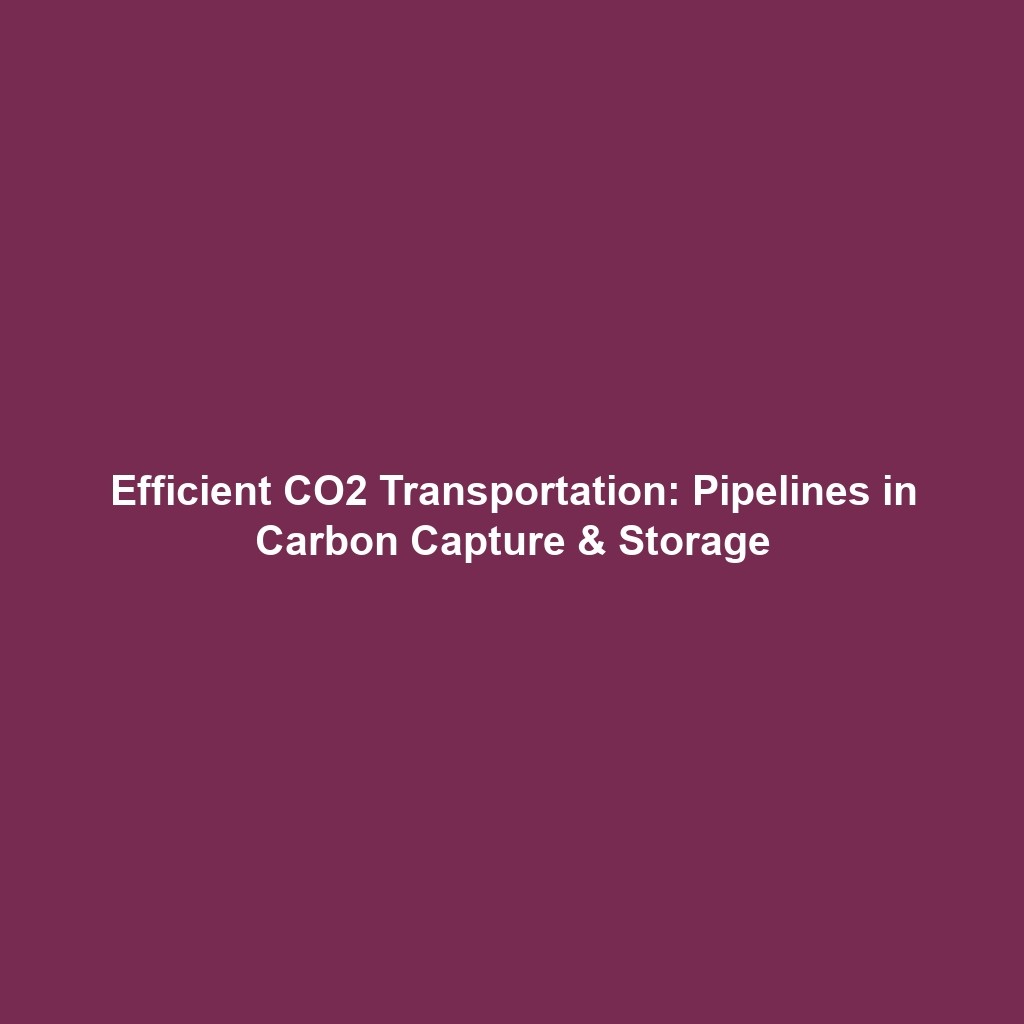Enhanced Oil Recovery (EOR): Injecting CO2 into Oil Fields to Extract More Oil
Introduction
Enhanced Oil Recovery (EOR) is a sophisticated method that significantly boosts oil extraction efficiencies, utilizing carbon dioxide (CO2) as a vital component. Within the wider framework of Carbon Capture & Storage (CCS), EOR not only maximizes oil output from existing reservoirs but also aids in mitigating greenhouse gas emissions. As climate change concerns heighten, the integration of EOR techniques with CCS strategies offers a promising avenue for sustainable energy practices. This article delves into the principles of EOR, its applications, challenges, and future innovations.
Key Concepts
Enhanced Oil Recovery involves various techniques to extract additional crude oil from reservoirs. The injection of CO2, a critical factor in EOR, creates pressure within the oil reservoir, decreasing the viscosity of oil and enhancing fluid flow. This section outlines key concepts related to EOR:
Principles of EOR
- Mechanism of CO2 Injection: CO2 is injected into oil reservoirs, where it mixes with the crude oil, reducing surface tension and making oil extraction easier.
- Types of EOR: Besides CO2 injection, thermal methods and chemical flooding are other popular EOR techniques.
- Role in CCS: By trapping CO2 underground, EOR aligns closely with carbon capture initiatives, effectively preventing CO2 from entering the atmosphere.
Applications and Real-World Uses
The applications of Enhanced Oil Recovery (EOR) are vast, especially concerning Carbon Capture & Storage (CCS). Key examples include:
- Oil Fields in the United States: Facilities in regions such as Texas and California utilize CO2 EOR techniques to access hard-to-reach oil deposits.
- Global Ventures: Countries like Canada and Norway have successfully integrated CO2 EOR within their CCS frameworks, promoting energy independence while reducing regional emissions.
- Economic Benefits: The application of EOR significantly enhances a field’s oil recovery factor, making existing oil operations more economically viable and sustainable.
Current Challenges
While Enhanced Oil Recovery (EOR) presents numerous advantages, it also faces several challenges, including:
- Cost Implications: High operational costs related to CO2 capture, transportation, and injection.
- Technical Limitations: Not all reservoirs are suitable for EOR techniques, affecting widespread adoption.
- Regulatory Hurdles: The need for stringent safety and environmental regulations can delay project approvals.
- Public Perception: Concerns about the environmental consequences of CO2 storage may impact community support.
Future Research and Innovations
Innovations in Enhanced Oil Recovery (EOR) are vital for advancing the goals of Carbon Capture & Storage (CCS). Emerging trends include:
- Next-Gen Technologies: Research into improved CO2 capture methods, such as direct air capture, aims to make the EOR process more efficient.
- Integrated Systems: Development of hybrid systems that combine solar, wind, or geothermal energy with EOR for enhanced sustainability.
- Artificial Intelligence: AI applications in reservoir simulation are expected to optimize CO2 injection strategies and improve recovery rates.
Conclusion
Enhanced Oil Recovery (EOR) through CO2 injection stands as a pioneering method within Carbon Capture & Storage (CCS), demonstrating how fossil fuel extraction methods can align with environmental goals. With the potential to not only increase oil yields but also help in the fight against climate change, EOR represents a critical intersection of energy production and environmental stewardship. For those looking to further understand the implications of this technology, further reading on Carbon Capture Techniques and Renewable Energy Innovations is highly recommended.






